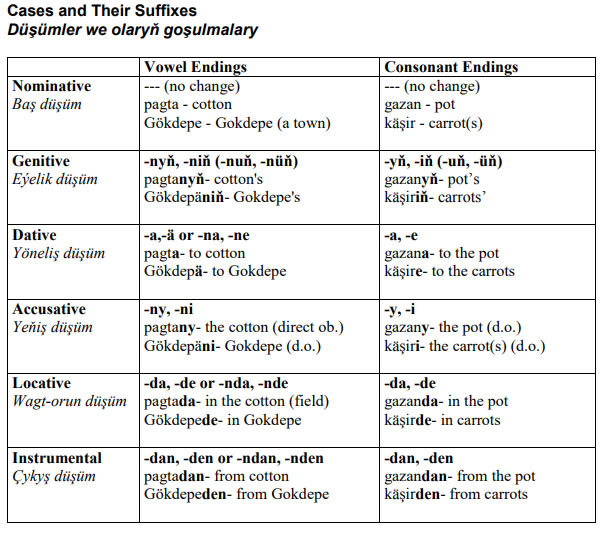Language/Turkmen/Grammar/The-Case-system
Jump to navigation
Jump to search
Rate this lesson:
Like Russian or German, the Turkmen language has a system of grammatical cases. Cases change words depending on their grammatical context.
Turkmen has six cases, and these cases are used for all nouns, not just personal prounouns.
The six Turkmen cases are:
- the nominative, used for the subject of the sentence;
- the genitive, similar to English possessives;
- the dative, used to show directed action;
- the accusative, which is similar to the English direct object
- the locative, which shows locality;
- and the instrumental, which is used to show origin.
While six cases might seem a bit overwhelming at first, it should be noted that the case suffixes often simply replace our English prepositions such as:
- from
- at
- with
- in
- on
- to
Also, the rules for their use are remarkably simple and inflexible, unlike those of the Russian cases.
Take a moment to explore these relevant pages as you conclude this lesson: Nouns & Word order.
Sources[edit | edit source]
https://photos.state.gov/libraries/turkmenistan/868986/pdf/TurkmenLanguageLearningGuide_001.pdf
Other Lessons[edit | edit source]
- Plurals
- Nouns
- The Subjunctive Mood
- Word order
- Past in the past (pluperfect)
- Questions
- Future Tense
- Question words
- Adjectives
- Pronouns


